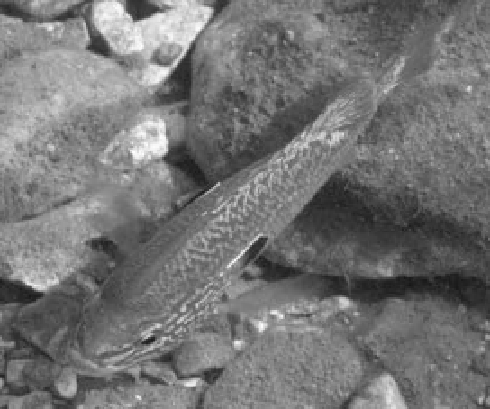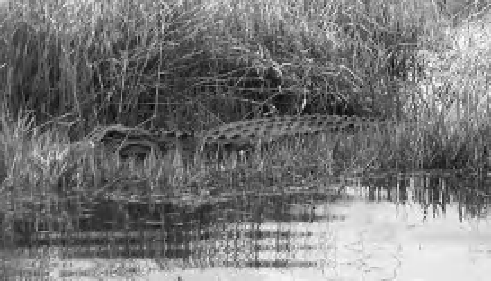Geoscience Reference
In-Depth Information
Nations Environmental Program 2004). Reefs
take on many different morphological forms
-
fringing, barrier, patch and atoll (see Fig. 5-
21)
-
depending on local conditions of the
continental shelf and marine environment.
Reefs typically build up to low-tide level, so
they are subject to constant wave action. Storm
surges and tsunamis bring the greatest water
turbulence and potential for damage. During the
Indian Ocean tsunami of December 2004, for
example, some corals suffered severe, highly
localized physical damage, particularly where
already weakened by human activities, such as
coral-rock mining. On the whole, however, most
coral reefs experienced minimal damage and
provided coastal protection in many places
(Srinivas 2008).
Coral reefs are sensitive to environmental con-
ditions, especially water temperature. A short-
term increase of only 1-2 °C may cause bleaching
of corals, and a long-term 3-4 °C increase leads
to signii cant coral death (Ramsar 1999). The i rst
major case of coral bleaching was observed in
1983, and since then several more episodes of
bleaching have taken place around the world
with economic consequences for tourism in the
Maldives, Palau, and Caribbean islands (Global
Coral Reef Monitoring Network 2010).
Figure 7-9.
Longear suni sh (
Lepomis megalotis
)
displays brilliant orange and turquoise colors (see Color
Plate 7-9). This male is quite possibly guarding a nest.
Native to eastern North America, the longear suni sh
prefers shallow, clear water with slow to moderate
current in streams with clean gravel beds (Ohio
Department of Natural Resources 2010). Photo by J.S.
Aber and S.W. Aber; Kahola Creek, eastern Kansas,
United States.
7.3 Wetland vertebrates
Vertebrate animals are members of the subphy-
lum Vertebrata, which derives its name from the
vertebral column, or backbone, that protects the
spinal cord. Wetland vertebrates include repre-
sentatives from i ve taxonomic classes. Of these,
i shes are purely aquatic (Fig. 7-9), and amphib-
ians are semi-aquatic. Reptiles, birds and mam-
mals depend on water to varying degrees based
on their individual adaptations and behaviors.
Within these classes are some animals that are
highly adapted for wetlands and could not
survive in other environments (Fig. 7-10) as well
as many species that frequent wetlands, but
may live in other habitats just as well (Fig. 7-11).
Selected wetland vertebrates are considered in
the following sections, particularly for palus-
trine environments.
Figure 7-10.
American alligator (
Alligator
mississippiensis
), a semi-aquatic reptile that lives near
rivers, swamps, marshes, sloughs, and other permanent
bodies of water. It eats just about any kind of animal -
vertebrate or invertebrate. Eggs are laid in a large nest
built of mud and vegetation; heat given off by rotting
vegetation warms the eggs. Found in the southern
United States from North Carolina to Texas. Seen here
in Okefenokee Swamp; photo courtesy of M. Martin.
7.3.1 Amphibians
Herpetology is the study of amphibians and
reptiles, many of which are closely associated
with wetland habitats. These animals share
nearly all the same body parts, functions and
senses as humans
-
brain and well-developed







